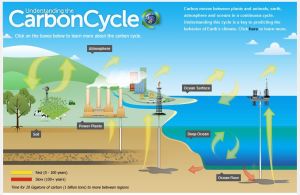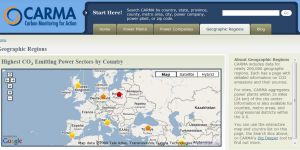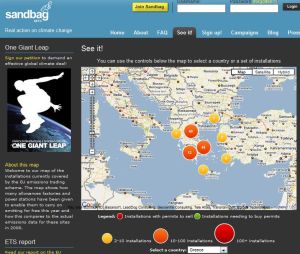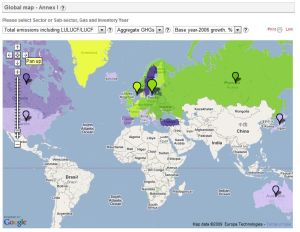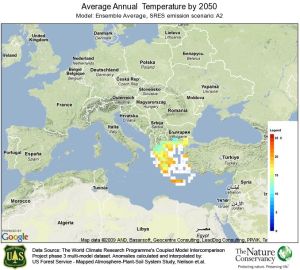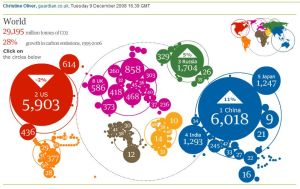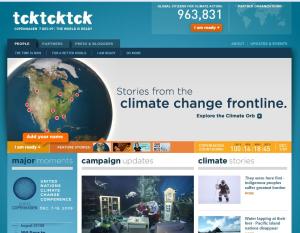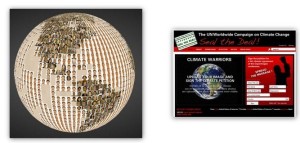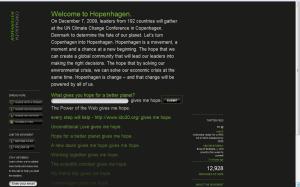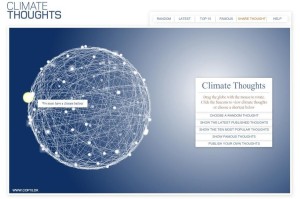A what to follow guide
COP15 (the Copenhagen Climate Change Conference) is the UN-speak for the 15th meeting of the parties of the UN’s Framework Convention on Climate Change…and is fast approaching. Set to take place between 7th-18th December, it is yet one more of those international events that attracts the hopes of the global civil society. The conference traces its origins to the 1992 Earth Summit in Rio de Janeiro, which aimed at coordinating international action against climate change. Six years later the Kyoto Protocol was signed in Japan and two years ago signatories gathered in Bali, Indonesia, to launch negotiations for stronger action against climate change. This process will now culminate at the meeting in Copenhagen.
The Independent notes that it will be one of the most significant gatherings in history, surpassing the 1814-1815 Congress of Vienna or the 1945 Yalta & Potsdam meetings, since between 10,000 and 15,000 officials, advisers, diplomats, campaigners and media personnel from nearly 200 countries, are expected to attend. The mission of the conference is none other than to achieve a global agreement on ways to tackle climate change and global warming. In other words which countries should cut CO2 emissions and by how much. This essentially means, to agree on who will pay the bill. The goal? To limit global warming to 2°C above the pre-industrial levels. The big challenge for governments? To agree on a treaty that will reduce developed country emissions by at least 40% by 2020.
I think 100 days is a good milestone to get us all interested in this summit and here are a few good resources to get you started. After all, this is one of those cases that we expect a lot from the web and its historically unparalleled power for global mobilization. The information available is huge but it is good to get a few simple facts straight.
1. Of course one could start with the official COP15 Climate Facts page and also read the Guardian’s Q&A which gives you a quick run-down of the issues under discussion.
2. The UK’s Department for International Development also has a quick list of fact-checking like:
- The world has warmed by nearly 1° C over the last century. The rate of warming over the last 50 years is nearly twice that of the last 100 years.
- The costs of ignoring climate change have been estimated at more than that of the two world wars and the Great Depression (5 to 20% of GDP) (Stern Report).
3. If you need a good rundown of the issues involved from the NGO perspective and what someone should aspire to from the COP15, read the WWF – The New Climate Deal – A Pocket Guide.
4. America.Gov, (US Dept.of State) has a nice infographic which explains the carbon cycle and also “what carbon looks like” or “how scientists measure carbon”.
5. The Carbon Quilt is an impressive independent project. It is an online greenhouse gas visualisation tool that attempts “to create a visual language for showing greenhouse gases that helps communication.” It brings the abstract concept of a ‘carbon footprint’ to life and works on all scales – users can see the actual carbon footprint of a whole continent or a single light bulb. I am still exploring the tool which as a prototype is not so intuitive to use but looks like it’s certainly worth the effort.
6. CARMA (Carbon Monitoring for Action) is a global inventory containing information on the carbon emissions of over 50,000 power plants and 4,000 power companies worldwide. Since, power generation accounts for about one-quarter of global emissions, it is worth looking at their interactive maps (yes, it covers Greece also, with Kozani area topping the list).
7. Sandbag, is a not-for-profit organization which aims to exploit the emissions trading scheme in a creative way, allowing anybody to “take out” of the system, “permits to pollute”. So, if you part with €25 per tonne (=one transatlantic flight), you can also have a positive contribution to climate change. “I suppose it’s a bit like burning money in front of someone so they can’t spend it on something bad,” as Bryony Worthington, the brain behind Sandbag explains. See also a Map of EU installations currently covered by the EU emissions trading scheme.
8. Yes, this is the ideal subject for map and mashup enthusiasts, so Google itself would of course have something to show here and it does. A map that visualizes greenhouse gas (GHG) emissions generated by a number of industrialized countries, released by the United Nations Framework Convention on Climate Change (UNFCCC) and members of the Google team (you can read the Google LatLong post explaining the project). This map provides truly rich information and all the interactivity you can expect. You can also download a full pdf report of the country you are interested in (here is the GHG emissions report for Greece, which ranks 7th in emissions growth since 1990). By the way, I love the capability of filtering results on the EU15 and EU27 level, something that is a glaring omission in most data related analyses especially from the USA.
9. Yet another impressive interactive map (this post should be titled “environmental maps”) is the Climate Wizard, developed by the Nature Conservancy, the University of Washington and the University of Southern Missisipi.
This interactive user-friendly map allows users to access climate change that has occurred to date (past 50 years) or predicted to occur (2050 and end-of-century) and visualize the impacts anywhere on Earth. After setting your filters, you can download the map image or a GIS ready file or a zip file with all the documentation info.
10. The Guardian pages on Environment are a very good resource and naturally they dedicate sections on carbon emissions and the Copenhagen Summit. Of course, you can see a graph showing carbon emitters by country or a graphical countdown of major events leading to Copenhagen. Incidentally, the paper also carries this very interesting story on Internet’s carbon footprint, which seems to be significant and growing by more than 10% each year, according to scientists, a fact which burdens not only the environment but since this is the outcome of huge energy demands, also threatens the financial stability of net companies like YouTube.
The Guardian has also put together a very useful and straightforward list of the demands that 15 leading NGOs and charities are making of the negotiators, in this article aptly titled “What should we be asking world leaders to agree to in Copenhagen?”
11. On this activist front, one should observe the oddly named TckTckTck campaign, an impressive effort which brings together an alliance of leading INGOs like Oxfam, WWF, Greenpeace, Amnesty International, Christian Aid and others. The Chair of the campaign is none other than the venerable Kumi Naidoo who incidentally also had an article in yesterday’s Guardian explaining the movement (some may remember he was also the force behind the GCAP campaign).
Things you can do at the TckTckTck is to Explore the Climate Orb, where you can add your own story related to how climate change has changed your life; you can add your name to show your support to a meaningful agreement; you can use the toolkit to organize your local movement and of course spread the word via all the latest social media darlings. Here is a promotional video featuring actor Gael Garcia Bernal.
12. “Adopt a Negotiator” is a “sister” project which follows and reports on the actions of country negotiators in the period leading to the summit. In effect, a person called “Climate Tracker” is assigned one negotiator and he reports on the progress made. All the campaign asks from you is to support it and follow progress which means that each negotiator will feel the public pressure.
13. The “Seal the Deal” campaign is the UN-led campaign which encourages users to sign an online, global petition to be presented by civil society to governments of the world urging them to reach a fair, balanced and effective agreement in Copenhagen. You can also upload your photo which is added to complete a nice photomosaic application called “Climate Warriors”, essentially the earth which gradually shapes up. At the time of this post, only 12.121 signatures were collected…
14. Hopenhagen is a movement created by the United Nations together with the International Advertising Association and a coalition of the world’s leading advertising, marketing and media agencies. It is a nicely designed web application where you write “what gives you hope” and you watch the stream realtime. Impressive it is, but at the same time I would call it “shallow” since one cannot really see the benefit of such a project. Yet another sign of the advertising world’s introversion and self-importance.
15. I personally find “Climate Thoughts” much more interesting. It is another application by the official Copenhagen website, which “makes possible to read many of the thoughts passing through people’s minds on the issue of climate change and add your own personal thoughts to the collection of climate thoughts – a three-dimensional version of the globe-like COP15 logo….Thoughts added by people are represented as shining stars, growing brighter when supported by other users of the site.” The screenshot shows the most popular one currently which is ” We must have a climate bailout”.
16. Finally, Climate Game is another application that lets you take part in an interactive flash game where you upgrade and optimize buildings and plants learning the various processes as you go, again in the official COP15 website.
This is by no means an exhaustive list, so if you know of any significant resource or movement not included here, please share it. I will update the post as we approach the 7th December 2009 milestone. Potentially this is a true web moment and we should all watch how the next 100 days unfold.

